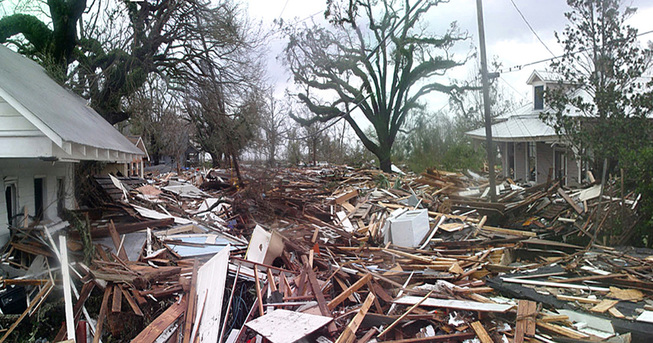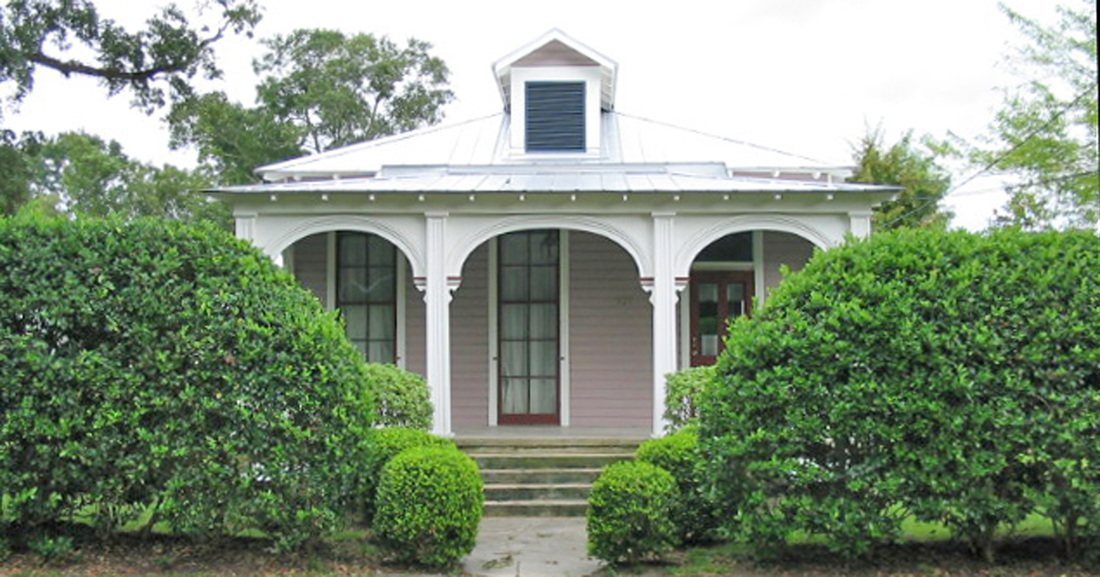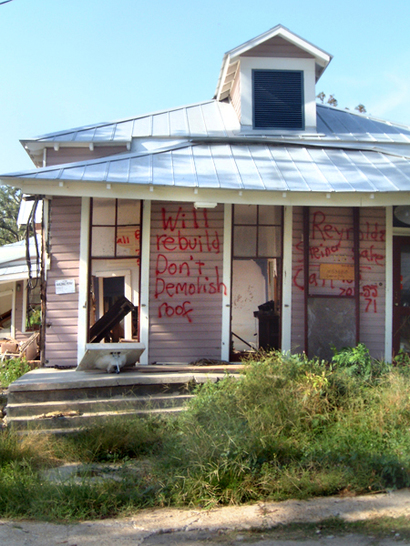Remembering the Day It All Changed
Bay St. Louis resident and author, David Reynolds, shares an excerpt from Katrina Ten Years After, a new book edited by Mark Klinedinst, Emeritus Professor of Economics, USM.
- by David Reynolds
By Thursday, August 25, my wife and I, and many others across southern Alabama and Mississippi, and southeast Louisiana - especially the Greater New Orleans metro region - took notice when tropical storm Katrina feinted toward the north Atlantic, turned abruptly left, and crossed the southern tip of Florida, into the Gulf. Soon, the predicted track shifted northwest as Katrina widened and strengthened. On Friday, we brought out the plywood window and door covers and put them in place on the side facing the Sound. We checked provisions. On the 26th, barometric pressure, winds, and wave heights worsened in reports from the NOAA weather data buoy four hundred miles or so to the southeast. At dusk, frigate birds appeared, high up, in large numbers, as they do when things are not well offshore.
On Saturday morning, the 27th, I drove to New Orleans, where I managed The Green Project, a non-profit that acquired, conditioned, and sold for reuse salvaged and surplus building materials, components, and paints, to check storm preparations. Around noon, my wife called, anxious that we should prepare to depart inland in view of the predicted track and strength of the hurricane. I had grumbled about possibly being without power for a spell in the late summer heat and humidity, and worried about the great, aged, oak behind our neighbor’s barn, close enough to put a good lick on our guesthouse if it blew down. I figured to stay though, as I had in previous storms. I knew the varied and brave sounds that our house made in high winds and wasn’t much bothered, except for the added work, inconvenience, and discomfort. In the meantime, my wife, who didn’t have a lifetime of living on coasts and was of decidedly less of a mind to stay than I, followed the TV and Internet storm coverage. Friends in Birmingham called, inviting us. While I put on the more difficult west-facing plywood covers, left off the day before, a second weather buoy, much closer, reported a barometric pressure of 27 point something. I can’t recall the decimal “something," only that the low number was alarming, not so far from becoming 26 point something, radically low. That was enough. We would leave in the morning (Sunday), and be back in a few days. Going without electricity when we returned seemed likely, and would be uncomfortable, but there would be gas for cooking, and we had lanterns, flashlights, candles, and neighbors who looked out for one another and who would enjoy visiting on porches in the evenings until our houses cooled inside. On Sunday morning, things were quiet around town – a car going by once in a while, an occasional sound of sawing or hammering. We packed lightly: casual clothes, laptops, some vital documents, and, oddly, a few personal keepsakes. In a bureau drawer, I noticed my Coast Guard flight log, with its dates and notations of search and rescue at sea, and tucked it in my pack. The cat, uncooperative in most things and strongly adverse to transport, entered the pet carrier on her own, skipping the usual balking and hiding. None of the buildings on our block was substantially intact by the night of August 29, 2005. We were not there to see it happen. People died in wind, storm surge, and building collapse, or survived, frightened and wet, in attics, in trees, and on roofs. It took until 2011 to clean up, clear, and groom the property again. I drove the 375 mile round trip from Jackson uncounted times, in our small pickup, down and back in a day, in all seasons, getting in six or more hours of site work.
In 2013, we built a small, comfortable cottage on one side of our property. We retreat there often on weekends as I write this in 2015. The buildings on our block are fewer, all residential, and all new. Around town, some names and faces are as before. Others came after Katrina. We all love Bay Saint Louis: happily, gently, and, some of us, sadly and fiercely.
This essay has been excerpted from the new book Katrina, Ten Years After, available for sale in August, 2015
Comments are closed.
|
Categories
All
Archives
July 2024
|
Shoofly Magazine Partners
Our Shoofly Partners are local businesses and organizations who share our mission to enrich community life in Bay St. Louis, Waveland, Diamondhead and Pass Christian. These are limited in number to maximize visibility. Email us now to become a Shoofly Partner!






























 RSS Feed
RSS Feed























